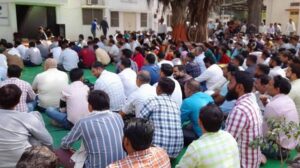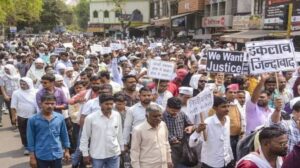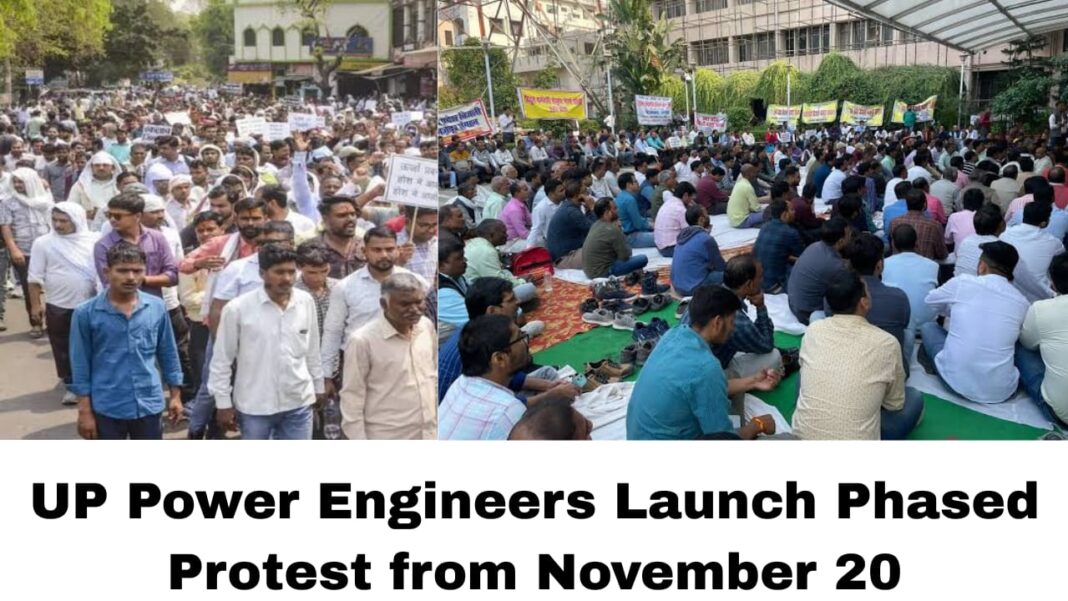Digital News Guru Uttar Pradesh Desk:
Electricity Engineers in UP to Wear Black Armbands in Nov 20 Protest
In a major labour-action move, the UP State Electricity Board Engineers’ Association has announced a phased protest beginning November 20, 2025, over alleged harassment and punitive measures by power utility management. The decision underscores escalating tensions in the power sector workforce in Uttar Pradesh and shines a light on the underlying structural issues in public-sector utilities.
The Grievances: What’s the Protest About?
The engineers’ association says the action stems from management’s failure to reverse disciplinary proceedings against its members following a strike in March 2023. According to the union, engineers have faced vigilance inquiries, FIRs under the Essential Services Maintenance Act (ESMA), punitive transfers and stalled promotions, all of which the association says have “created an unhealthy work environment”.

Specifically, the association has demanded:
- Withdrawal of all punitive actions taken since the March 2023 strike.
- Resumption of promotions and regularisation orders that have remained stalled.
- Revocation of what they call retaliatory transfers of engineers to remote postings.
- Intervention by the state government, particularly appealing to Yogi Adityanath (Chief Minister of Uttar Pradesh) to create a conducive work climate in power corporations so that engineers can focus on technical work rather than administrative harassment.
The union asserts that unless these demands are met through bilateral talks by management, they will be forced to escalate their protest.
The Format: Phased, Strategic Protest
The protest is not a sudden full-blown strike, but rather a phased, strategic action designed to draw attention and apply pressure while allowing work continuity. According to the association’s plan:
- From November 20 to 28, engineers will wear black armbands during duty, and hold short demonstrations during lunch breaks and after working hours.
- From November 24 to 28, region-specific protests will be held at different headquarters:
- November 24: Meerut (Western UP)
- November 25: Agra (South-Western)
- November 26: Varanasi (Eastern UP)
- November 27: Kanpur (Central)
- November 28: Lucknow (State HQ)
- On November 29, the union has declared a “Sankalp Diwas” (Engineers’ Resolution Day) when the central executive committee will meet and chart the next phase of action if management fails to address the demands.
This approach signals a calibrated escalation: first visual protest and awareness, then a possible shift to more intense action if results are not achieved.

Why This Matters: Engineers, Power Infrastructure & Governance
This protest has wider implications beyond a labour dispute. A few reasons why this matters:
- Operational Impact: Engineers form the technical backbone of the power utilities. If morale drops or the workforce becomes distracted by administrative issues, it could degrade performance in power generation, transmission or distribution — especially in a state like Uttar Pradesh which has ambitious power targets.
- Policy Warning Sign: The protest reflects broader discontent in the public power sector — not just over immediate grievances, but over issues like promotions, transfers, regularisation, and managerial autonomy. These are recurring themes in power-sector unions.
- Privatisation & Reform Underpinnings: Although this protest is focused on “harassment” and internal grievances, there’s a broader backdrop of resistance in the engineer/unions community against power-sector reforms and privatization of distribution utilities in UP. For example, earlier protests involved objections to the state government’s decision to privatise two major DISCOMs in UP.
- Political Pressure: By appealing directly to the Chief Minister and planning demonstrations across major regional hubs, the engineers are converting technical-workforce issues into a political challenge for the UP government. How the government responds will signal its stance on labour and power-sector governance.
The Government & Utility-Management Perspective
While the union has made its position clear, the management and government side faces some complex dynamics:
- Accepting demands may create precedents for similar actions across other states and sectors.
- Some actions (such as ESMA FIRs and vigilance inquiries) may have been invoked for serious reasons — reversing them could weaken institutional discipline.
- The management will need to balance ensuring uninterrupted power supply and meeting performance targets while negotiating with the engineers.
- The government will likely evaluate the risk of escalation (e.g., full-blown strike) versus conceding to demands, especially ahead of infrastructure targets and election cycles.

Potential Risks & Escalation Points
The protest currently is modest, but if unmet, it could escalate. Some risks include:
- The union moving from demonstrations to work-to-rule, partial strikes, or even full stoppage — given the critical nature of the power sector such actions can quickly ripple into outages or delays.
- Public backlash if protests cause power disruptions, which would shift public opinion against the engineers.
- Management resorting to stronger punitive measures (suspensions, terminations) which could deepen the conflict.
- The union linking this protest with larger national issues (privatisation resistance) rather than focusing strictly on the local grievances — broadening the scope and complicating resolution.
Conclusion
The planned protest by the UP State Electricity Board Engineers’ Association may appear technical or internal in nature, but it highlights bigger themes: labour-management relations in Indian public utilities, the interplay of governance and workforce morale, and the potential for technical employees to influence public services and infrastructure outcomes. As the November 20 start date approaches, the developing strategy from both sides — management/government and protestors — will determine whether this remains a contained grievance negotiation or morphs into a significant confrontation in the Uttar Pradesh power sector.
You May Also Read: Afghan Trade Minister Nooruddin Azizi Begins 5-Day Visit to India for Trade Talks








